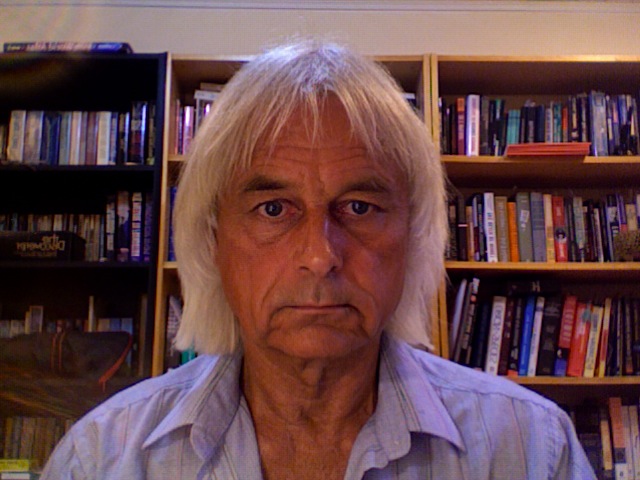We use commercial bank-issued credit/debt money: bank deposits. Banks lend money into existence, and borrowers/debtors spend the bank-issued money into the economy.
Commercial banks issue the money supply by lending the money into existence. The government and the economy borrow the bank-issued money and spend it into the economy, where the borrowed and spent money becomes the economy's "money supply". The money supply is spent and re-spent and ultimately is held as "savings" by people who received the spent money.
All of the money that some people hold as their savings, is the same money that is owed to commercial banks by government and private sector debtors as loan repayments. If there was no debt, there would be no money. To reduce money debt, requires an equal reduction in money savings. Money and debt are issued by commercial banks as linked +/- pairs, in a $zero sum equation. To extinguish -$1000 of debt requires extinguishing +$1000 of money.
Monetary reformers like me, and $arithmetically literate economists in general, argue that the government "should" issue some fiat money and spend or give the money into their economy, as a solution to The Money Problem. But to date, governments are not issuing their own fiat money. The commercial bank money monopoly remains in effect.
A bank starts with $0. A customer comes in and gets a $1000 loan at 5% interest, payable in one year. The bank divides $0 into a linked +/- pair: a +$1000 deposit account and a -$1000 loan account. The positive number is the "money"; the negative number is the "debt". The borrower spends the $1000 of money into the economy, buying something or paying somebody. One year later the borrower earns $1000 out of the economy and deposits the $1000 in his bank account. The bank applies the +$1000 of money against the -$1000 of debt, and both numbers are cancelled out in the opposite of the process by which the money and the debt were created.
The bank loan added $1000 to the economy's money supply; repayment of the bank loan reduced the economy's money supply by $1000. Now there is $0 money and $0 debt. Except for the $50 interest payment, which is still owing.
Borrowers have to get the interest payment money from somewhere "outside" the system in which banks issue the repayable +/- money supply. Except there is no outside, because banks have a monopoly on money issuance. Interest is $arithmetically unpayable. Interest makes the equation negative sum: banks create more debt than they create money to pay the debt. The system appears to be working as long as evermore new borrowers are spending evermore new bank-issued credit/debt money into the economy, so old debtors can earn and use the new money to pay their old debts and interest.
GDP measures total money spending which, when adjusted for imports/exports, equals total money earnings in a nation's economy. The existing money supply is re-spent a number of time but most of the money is ultimately taken out of circulation in the economy and is "saved" by somebody. Ongoing spending requires ongoing expansion of the spendable money supply, which requires ongoing increase in total bank lending and borrower spending. GDP growth requires debt growth (and/or a reduction in savings as people spend their savings).
When money/debt growth slows or flattens, we get recession. When money/debt growth is negative -- when people are repaying more bank loans than taking out new loans -- we get debt deflation depression. These are $arithmetic phenomena -- financial/monetary phenomena -- not economic production and consumption phenomena.
Money drives the real economy, not vice versa. If money is not driving the economy, nobody is, and the economy stops working.
The economy that uses real resources and labor and technology to produce economic value, is a different and separate system from the commercial banks that create money and debt. There is no direct mechanical linkage between the economic production and distribution system, and the money creation and allocation system. The economy doesn't get money by producing stuff. The economy gets money by selling stuff to people who borrowed money from banks.
When debtors cannot earn money, because people aren't spending and investing money, debtors can't make their loan payments, and banks begin failing. The ongoing functioning of the commercial banks' monopoly money system requires a permanent increase in total debt to increase total money. Without ongoing money supply inflation, the whole system crashes into ruin.
Banks lend money against collateral assets like houses, stocks, business assets and inventories, etc. In order to keep getting evermore new bank debt/money into the economy, the economy has to keep producing evermore real assets to pledge as collateral. Overproduction of EVERYTHING is a functional requirement of the banks' monopoly money system. Economic and environmental sustainability probably requires that we reduce our production and consumption of real physical economic goods. But if we do it, the money system and the economy will collapse.
Money and banking make our rich complex economy possible. But the commercial banking system's money monopoly is among the most perverse institutions the world has ever suffered.
Money is Power
If you possess the power to issue and allocate money, you can create and lend money to fund any kind of economic activity you choose. Money issuance and allocation is the macroeconomic command and control system that activates -- puts to work -- the real economy. Money is power, and the power to issue and allocate money is the great over-riding power of them all.
Next Page 1 | 2 | 3 | 4 | 5 | 6 | 7 | 8 | 9 | 10 | 11 | 12
(Note: You can view every article as one long page if you sign up as an Advocate Member, or higher).





